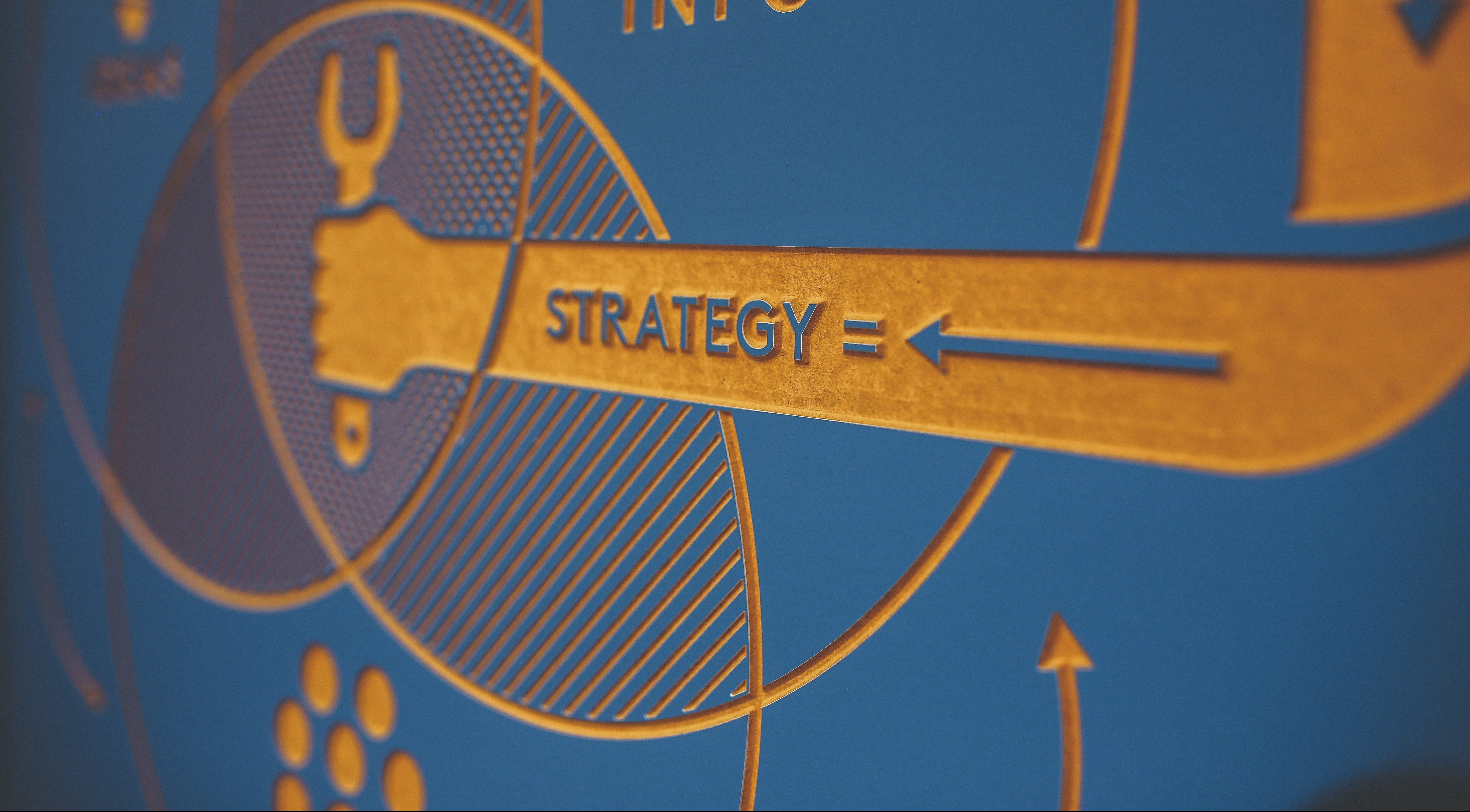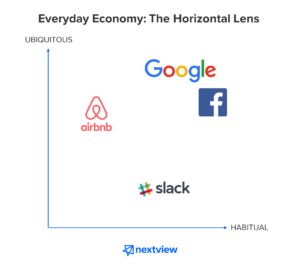
Rob Go
As we’ve detailed in prior posts, our investments at NextView are increasingly focused on a theme we call the Everyday Economy. We believe that the internet is a super-technology, and are most excited about the second-order effects that this super-technology will have on everyday life for everyday people.
When describing the Everyday Economy, it is helpful to talk about some of the verticals that are seeing wholesale redesign and the opportunities within those verticals. We have blogged about a few of the verticals so far, including housing, food, entertainment, and others.
But since we announced this new focus, we’ve gotten some questions about whether the Everyday Economy is primarily a vertical lens.
Allow me to set the record straight: It’s not a vertical strategy.
Not every company we invest in will fit neatly within one of these verticals. Conversely, not everything in these verticals as an automatic fit either. For those types of startups, we like to evaluate it with a different horizontal lens.
The Horizontal Lens: Is the Company Habitual and/or Ubiquitous?
When we think horizontally about companies redesigning the Everyday Economy, we tend to look at two dimensions:
The first is the habitual nature of a product or service. Is this a company that consumers or business users interact with nearly every single day? Does it become ingrained in the daily life and daily choices and behaviors of an individual?
The second is the ubiquitous nature of the problem or opportunity. Is this a problem that huge swaths of the population face or will face at some point in their life?
We think about both of these dimensions when deciding how excited we might be about a potential investment. It’s helpful to plot it on the axes below (including a few well-known examples).

There are a few extraordinary companies that exist far on the upper right-hand corner of the graph. Facebook and Google are used by billions of people every single day. It’s why they are among the most valuable companies on the planet. However, even as you go down an order of magnitude or so of scale, you find that many other category-defining companies are at the extreme end of at least one of the axis.
For example, Slack is not a product that is used by every single person, but it is something that is used every single day by millions of business users. It’s a daily, habitual product with a pretty large customer base. WeWork also falls into this category. Stripe is slightly different but is also interesting since it is a product for businesses that their consumers are interacting with daily.
On the other hand, Airbnb is not a daily use case for most consumers. It might be a weekly or monthly use case for some, but more likely, is something that could be used several times a year. However, finding lodging away from home is a problem most every person will encounter at some point. The service effectively breaks down the walled gardens of lodging, creating new opportunities for hosts to monetize their space and allowing consumers much broader selection, price points, and styles of accommodation. The nature of the marketplace is that there is a lodging option for anyone, and almost anyone can be a host.
There are many great companies that don’t quite fit within this view of the world. This doesn’t mean that these companies are any less exciting — just that they aren’t quite for us. For example, Datadog is an extraordinary company that doesn’t quite fit in this lens. As a monitoring and analytics software for DevOps, there are relatively few end users that live in their software day in and day out. And on the consumer side, there are huge businesses and powerful brands built in the luxury segment. But these purchases are typically reserved for a small number of customers and are fairly infrequent, so don’t tend to be a great fit for our area of focus either.
How Can Seed-Stage Startups Become Ubiquitous or Habitual?
Of course, the holy grail for any company is to be both ubiquitous and habitual. But this is difficult even for mature companies to accomplish, and most early-stage companies are just trying to succeed in one dimension. The focus of these businesses also tends to be quite different at the seed stage depending on which axis you lie.
For the habitual companies, the name of the game is driving referral and word of mouth. If a customer is using your service daily and getting jaw-dropping value, other people will hear about it and things like referral programs and other sorts of viral loops in the product can work really well. Our portfolio company Mealpal is a great example of this because workday meals are habitual and inherently social. As you scale, the question becomes how you can leverage this loyal and viral user base to extend beyond your initial core user or category.
For companies that are ubiquitous but more episodic, the name of the game is unit economics, marketing & branding excellence, and having a value proposition that is unique and memorable. Customers aren’t always in the market for your product but when they are, you need to be there (or you need to remind them that they need you).
Travel companies are a prime example of this, with the big winners being those that took advantage of platform shifts and emerging marketing channels (TripAdvisor), and had memorable value propositions (Priceline, Hotel Tonight). Casper is another example. Because a mattress is purchased only every 10 years, it’s imperative that the company have a memorable value proposition (100-night guarantee with free shipping both ways), have stellar unit economics, and be ubiquitous with their marketing. As these businesses scale, the question is how you can increase the frequency of purchase and engagement by launching more habitual products or services that increase their customers’ lifetime value.
We typically encourage founders to be maniacally focused on moving aggressively down one of the two axes, almost never both simultaneously.
For example, as a habitual product starts to gain traction, it’s often the kiss of death to move too quickly towards expanding the types of customer you are serving vs. making sure you are really best in the world at solving the needs of your core users first.
While we are thinking deeply about the tectonic shifts that the internet is bringing to everyday verticals, we tend to focus our efforts post-investment on helping portfolio companies really nail these sorts of challenges. Traction along one of these two dimensions usually creates unforeseen exciting opportunities for those who are really building something to be used every single day or for every single person.

